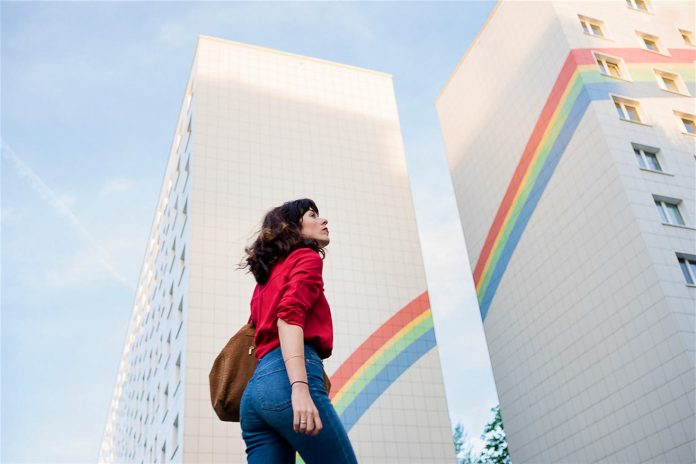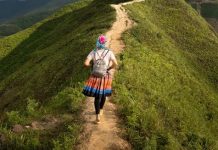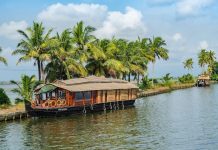It’s never been easier for photography enthusiasts to take and share better pictures, with technology becoming increasingly intuitive, practical and affordable. Instagram has granted the everyday traveller an audience, allowing passionate and creative people the opportunity to express themselves while also inspiring a bit of wanderlust in their followers.
 A street performer jumps some tape in Paris
A street performer jumps some tape in Paris
With so much to share, this expert-informed travel photography guide will help you make the most of capturing those unique moments from around the world.
 A lone figure walks the beach in Big Sur in California
A lone figure walks the beach in Big Sur in California
1. Beat the crowds
Whether it’s the famous vibrant red tori gates of Kyoto’s Fushimi Inari-Taisha or the gravity-defying spires of La Sagrada Família in Barcelona, images of iconic landmarks or eye-catching structures can look particularly compelling when they are free from the usual crowds. This means making an effort to get there early in the morning or late in the evening, with the added benefit of the soft, even light further adding to the aesthetic. Not only will you get the chance to capture a more tranquil mood, but you will be afforded more time and space to play with framing and perspectives. On the other hand, the presence of people can often add something to an image, with their expressions, poses and placements giving it a unique character, so it always pays to experiment no matter what situation you are in.
 An Ethiopian girl prepares a coffee ceremony
An Ethiopian girl prepares a coffee ceremony
2. Connect
Travel photography can come in many different forms, from street, architectural and landscape to fine art and portraiture, and all of them call for additional skills in order to create something special. When it comes to portraiture, getting intimate with the subject calls for a lot of trust on all sides. It’s of the utmost importance to be mindful of the people that are offering you a glimpse into their lives and their humanity. Respect the space and the culture that you have been welcomed into, and your patience and understanding will pay off. Often the important moments are not in the action but in the calm, and a well-crafted portrait where all parties are comfortable will instantly appeal to a viewer. Take the time to connect with your subject, learn about who they are and figure out a way to best tell their story.
 Inside the colourful Nasir-ol-molk Mosque in Iran
Inside the colourful Nasir-ol-molk Mosque in Iran
3. Seek symmetry
Every destination boasts its own visual identity, whether it’s an architectural structure or a natural landscape. Creating compelling shots around this is just a matter of practice. Harness clean lines and symmetrical objects and forms to create an artistic feel. If something catches your eye, take a few steps back and look at what’s in front of it. There may be be something else to include, whether it’s the column of a gate or the trunk of a tree. If you’re seeking to place yourself in the image, study the scene and decide on the best spot before setting up your tripod and self-timer.
 Picking out interesting details in your surroundings can lead to eye-catching images
Picking out interesting details in your surroundings can lead to eye-catching images
4. Focus
Travel photography is often about capturing the new and the unexpected, but that doesn’t mean that you should be resigned to just quickly snapping what passes in front of your lens. Taking the time to really home in on what is around you can lead to some striking images. Focusing on one object, person, or situation can make your photographs stronger and bolder. Experiment with composition and study your environment. Plan your shot and wait a few moments to see if the scene changes or if someone interesting walks into frame.
 Express yourself with your smartphone
Express yourself with your smartphone
5. Go mobile
Investing in a good camera can benefit your photography across the board, but it’s definitely not the only route to self-expression. Smart phone technology has advanced so rapidly that travellers now essentially hold full production suites for imagery and videos in their pockets. Learning to work around the limitations of smart phone photography can be a fun learning curve. Newer devices allow for optical zooming without losing photo quality, but users can also take the image from slighter further back and crop in on an aspect they like. Standard focal points can be hacked with the addition of clip-on fisheye and portrait lenses, while apps such as VSCO, Lightroom Mobile and Instasize can yield incredible post-production results. Keeping the lens clean is also vitally important, as smartphones can easily become dirty from constant use.
 A yakitori vendor checks his phone in Okinawa, Japan
A yakitori vendor checks his phone in Okinawa, Japan
6. Seize the moment
One of the biggest joys of travel photography is not knowing what to expect, so it’s essential to be ready to capture that charismatic street vendor flipping food or that fleeting moment of sunlight behind a building as soon as you see it. If it’s safe to do so (always be aware of your surroundings when carrying equipment) have your camera at the ready, because if you have to fumble around in a bag to find it, chances are that the moment will have passed. Hand grips, neck straps, side slings and belt or bag clips are all handy options to ensure you can capture a scene at a moment’s notice. Ensure that you have spare batteries and memory cards with you, as well as some alcohol wipes and a small lens blower to keep your equipment functional.
 Neist Point Lighthouse on the Isle of Skye, Scotland
Neist Point Lighthouse on the Isle of Skye, Scotland
7. Think format
Instagram is a world unto itself, and can be a helpful tool when it comes to searching for and sharing inspiring content. Many of the most successful accounts follow certain aesthetic rules, like creating vertical images at an aspect ratio of 4:5 to maximise size on the app, picking a cohesive theme, colour or editing style, and ensuring that the quality of each shot is in keeping with the rest of the feed. Take inspiration from other accounts in your niche and engage with them; ask them questions about their work and save the shots that really speak to you.
8. Research
It’s great to get lost while travelling, especially when you have a camera in your hand. Over-planning can kill the joy of a trip, but at the same time, taking the time to seek out special locations for shoots can really enhance your experience. Instagram’s built-in geotags are the perfect way to search what is around you in a new country, and can even show you what kind of shots other people have taken while they are there. Using weather apps will also help you plan for the best lighting by taking into account sunrise and sunset times, while access information for harder-to-reach spots can also be found with a bit of online digging.
9. Use the light
As previously mentioned, the moments right after sunrise and right before sunset (known as the ‘golden hour’) are great for warm, soft and even lighting, and can be perfect for landscape and portraiture work. You may not always be in a position to hit those timing marks however, so you should be able to adapt your style according to your environment. Hard sunlight can be a nightmare to deal with, but it can also create some stunning harsh shadows, especially for the likes of black and white images featuring architectural shapes. Get to know the limitations of your camera, and see how high you can bump your ISO (the setting that brightens or darkens a photo) before the image becomes too noisy. When shooting on mobile, try to use natural light whenever possible, as the built-in flash rarely looks good. Play around with longer shutter speeds with your camera mounted on a tripod to take in more light and create ghostly, blurred figures or vast, stretching light trails from traffic.
 A couple gaze at the ceiling of the Palau de la Música Catalana in Barcelona, Spain
A couple gaze at the ceiling of the Palau de la Música Catalana in Barcelona, Spain
10. Change your point of view
When taking travel shots, it’s always good to challenge yourself to shift your perspective, especially if you’re photographing something that has been captured countless times by other photographers throughout the years. Getting low, including something close up in the foreground, using diagonal and leading lines, shooting through a window, archway or door and moving in very close to a subject are all ways of shifting your viewpoint for dramatic effect. Move around and try different things and challenge yourself to show a well-known place in a new and interesting way.






